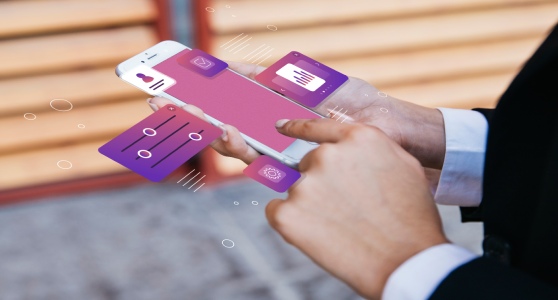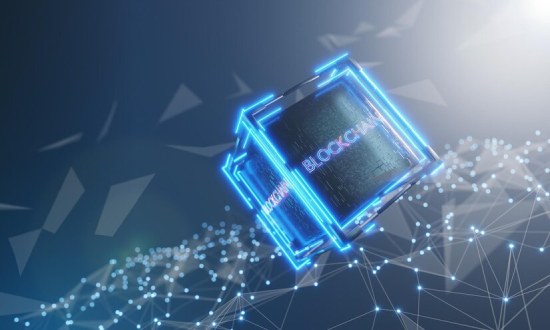-
Why Loyalty Needs a Rethink
Most loyalty programs flop. 77% don't last, over half of customers ignore their points, and nearly everyone forgets why they joined. But here's what's changing: NFT-powered loyalty is pulling customers back in. Starbucks saw repeat visits surge. Nike turned digital drops into $185M in revenue. And Web3 brands? They're seeing 40% higher spend from NFT holders. If you're still offering basic discounts, you're missing the shift. This guide shows what smart brands are doing instead.
What Is an NFT Loyalty Program?
An NFT loyalty program uses Non-Fungible Tokens (NFTs) as digital rewards instead of traditional points, coupons, or tier badges. These NFTs can act as access passes, collectible items, evolving rewards, or proof of status—something the customer actually owns and can use, trade, or show off.
Unlike standard programs where rewards sit in a database, NFTs live on a blockchain. That means customers can see and hold their rewards in a wallet, making them feel more valuable and permanent.
Why should your brand invest in NFTs loyalty programs?
1. Retention
Traditional:
Most loyalty programs have low retention. According to Bond's Loyalty Report, only 50% of customers feel rewarded for their loyalty, and many forget to redeem points.With NFTs:
NFT-based programs increase repeat engagement. Brands like Starbucks (Odyssey) report double-digit increases in re-engagement, with NFT holders returning more often to unlock exclusive perks or complete challenges.2. Engagement
Traditional:
Generic perks (like 10% off) don't build real involvement. 73% of loyalty programs fail to create meaningful emotional connection, according to Capgemini.With NFTs:
Gamified, token-gated experiences boost active participation. Clinique's NFT campaign led to 20x higher engagement on social media, with thousands of customers joining contests to earn NFT rewards.3. Customer Lifetime Value (CLV)
Traditional:
Discounts drive short-term purchases, but eat into margins. And loyalty members only generate 12–18% more revenue on average.With NFTs:
NFT holders behave more like community members than buyers. Case studies from Web3-native brands show up to 40% higher spend among customers who own digital assets tied to their account or tier.4. Brand Visibility
Traditional:
Most programs rely on email reminders or app notifications. Only 28% of loyalty communications are opened, and fewer are shared.With NFTs:
Digital collectibles are social by nature. When people earn or buy branded NFTs, they often share them. For example, Nike's RTFKT NFTs generated over $185M in brand-driven secondary sales, fueling exposure without ad spend.5. Personalization
Traditional:
Generic emails, same coupons. According to McKinsey, 71% of consumers expect personalized interactions, yet few loyalty programs deliver that well.With NFTs:
Dynamic NFTs can evolve with user behavior, giving each customer a truly unique reward. This creates 2x more engagement than static loyalty perks, based on pilot results from Web3 loyalty platforms.How to use NFTs in your loyalty programs.
1. Reward NFTs → Boost Repeat Purchases
- How: Customers earn special digital badges or trophies after certain actions, like purchases or social sharing.
- Why it Matters: Turns ordinary loyalty points into collectible assets, giving customers real reasons to keep returning
Example:
A coffee chain gives customers a digital badge after every 10 visits, redeemable for exclusive merchandise or a free coffee, turning casual visitors into loyal regulars.
2. Tiered Membership NFTs → Increase Customer Spend
- How: Different NFT tiers (like Bronze, Silver, Gold) reward customers based on their lifetime spend or frequency of visits.
- Why it Matters: Encourages customers to spend more and interact more often to reach higher levels and unlock better rewards.
Example:
An online clothing retailer offers exclusive discounts and VIP experiences to Gold NFT holders, motivating customers to level up by buying more often.
3. Dynamic NFTs → Personalize Customer Experience
- How: NFTs evolve visually based on each customer's interactions, purchases, or milestones.
- Why it Matters: Creates a highly personalized journey, making each customer feel individually recognized and valued.
Example:
A fitness brand issues an NFT that visually evolves every time customers complete workouts, providing personal motivation and shareable social proof.
4. Access (Token-Gated) NFTs → Enhance Exclusivity and Status
- How: NFTs provide holders exclusive access to special sales, early product releases, or VIP events.
- Why it Matters: Builds a strong sense of exclusivity and FOMO, turning customers into loyal brand ambassadors.
Example:
A sneaker brand gives NFT holders early access to new limited-edition drops, rewarding loyal customers and amplifying demand.
5. Profile Picture NFTs → Build Community and Brand Advocacy
- How: Unique branded avatars that customers proudly display online, showcasing their brand affiliation.
- Why it Matters: Encourages organic marketing, fosters community, and turns customers into active brand promoters.
Example:
A gaming company offers exclusive avatar NFTs to active players, creating a sense of pride and community, while boosting the brand's visibility online.
6. Cause or Charity NFTs → Demonstrate Social Responsibility
- How: Reward customers with NFTs when they participate in brand-sponsored charitable actions.
- Why it Matters: Highlights your brand's values, strengthens emotional ties, and positions your company as socially conscious.
Example:
An outdoor clothing brand gives NFTs to customers who join environmental clean-ups or sustainability campaigns, visibly aligning customer values with the brand.
7. Branded Collectible NFTs → Create Emotional Connections
- How: Offer limited-edition digital collectibles that reflect significant brand moments or history.
- Why it Matters: Generates lasting emotional connections, enhances brand storytelling, and makes customers feel part of something special.
Example:
A beverage company releases iconic vintage advertisement NFTs during its anniversary campaign, creating collectible nostalgia that customers want to own and share.
How to Select Different blockchain platforms
1. Pick a Chain That Won't Kill Your Budget
Some blockchains charge high fees every time you mint or transfer an NFT. That's fine if you're selling rare art to a few buyers, not great if you're rewarding thousands of customers.
Choose one with low or near-zero fees:
- Polygon – Cheap and works well with many tools.
- Solana – Very fast, low-cost, and popular for consumer NFTs.
- Flow – Used by brands like NBA Top Shot. Great for branded experiences.
🚫 Avoid: Ethereum mainnet (unless your budget can handle high gas fees).
2. Make It Easy for Your Customers
Most of your customers don't know what MetaMask is. If they need a crypto wallet or tokens to claim a reward, most will drop off.
Look for:
- Email sign-ups instead of wallets
- Credit/debit card support for NFT purchases
- No need for crypto knowledge
3. Stick With Something Stable and Secure
You're dealing with customer data and digital assets. If the platform is unreliable, slow, or gets hacked—it's your brand that takes the hit.
What to check:
- Has the chain been around for a while?
- Do real companies use it for live products?
- Is the developer support solid?
🚫 Skip anything that looks experimental or brand new unless you're doing a short-term test campaign.
4. Think About Your Brand's Values
If your brand talks about sustainability or ethics, this matters. Some blockchains (like the old Ethereum or Bitcoin) use a ton of electricity. That can cause backlash if your customers care about the environment.
Good eco-friendly choices:
- Polygon – Carbon neutral.
- Flow – Very energy-efficient.
- Solana – Lightweight compared to Ethereum.
5. Check for Tools That Work With Your Stack
You'll probably want to:
- Connect your loyalty program to your eCommerce site
- Track NFT ownership
- Send automated rewards
Make sure the platform:
- Has integrations with your tools (Shopify, CRMs, analytics)
- Supports “token-gating” (access based on owning an NFT)
- Offers APIs and dev support (your tech team will thank you)
Still unsure?
- Go with Polygon if you want flexibility, low fees, and wide support.
- Go with Flow if you want a plug-and-play experience with minimal crypto complexity.
- Go with Solana if you're focused on speed and scale, especially for younger, mobile-first audiences.
Suggested Read: Exploring Blockchain Technology to Enhance Loyalty Programs
5 Brands Using NFT Loyalty (and What You Can Steal From Them)
1. Starbucks – Building Loyalty Without Crypto Confusion
What they did: Launched Starbucks Odyssey, an NFT-based extension of their rewards program. Customers earn digital “stamps” by completing fun brand-related activities (quizzes, games, learning tasks), no crypto wallet required.
What you can learn:
You don't need to overwhelm your users with blockchain. Focus on the experience. Starbucks hid the tech behind a smooth UX and still made it feel innovative and exciting.Takeaway: Use NFTs as loyalty tools, not tech experiments. Keep the front end simple—email login, credit card checkout, no wallet setup.
2. Clinique – Turning Loyalty into Emotional Storytelling
What they did: Ran a social media contest where customers shared personal stories. Winners received limited-edition color-shifting NFTs tied to Clinique products and brand values.
What you can learn:
NFTs don't need to be tied to spend, they can reward participation, storytelling, or community support. This builds emotional loyalty, not just transactional habits.Takeaway: Reward your customers for being part of the brand—not just for buying stuff. NFTs can symbolize identity, not just perks.
3. Nike – Creating Digital Products That Build Value
What they did: Through its .Swoosh platform and RTFKT brand, Nike lets users buy, own, and showcase digital sneakers and collectibles—some with perks in games or IRL events.
What you can learn:
Digital assets can be more than rewards—they can become brand extensions. These NFTs hold resale value and drive status-driven engagement.
Takeaway: If your brand has a strong identity or visual culture, NFTs can turn into digital merchandise, and drive revenue, not just retention.4. Lacoste – Loyalty as Access, Not Just Points
What they did: Released NFT “passes” that give access to a private Discord, exclusive drops, behind-the-scenes content, and even influence over product direction.
What you can learn:
Loyalty doesn't have to be public. Creating gated digital spaces for your top fans builds community and increases perceived value of being a customer.
Takeaway: Use NFTs as digital keys, whoever holds one gets access to VIP treatment, inside info, or real influence.5. Porsche – Making Brand Ownership Feel Special
What they did: Sold NFT collectibles that unlock premium experiences, early previews, and community perks for fans of the brand.
What you can learn:
If you're in a premium market, NFTs can reinforce status and offer high-touch experiences to your most loyal customers.
Takeaway: Use NFTs to give your top customers access and recognition they can't buy anywhere else, even if they already love your brand.What This Means For You:
If these global brands are doing it, it's not about chasing hype, it's about adapting loyalty to how modern customers think:
- They want ownership, not just discounts
- They want access, not spammy coupons
- They want to be part of a community, not a mailing list
You don't need Nike's budget. You need the right structure, story, and strategy.
NFTs give you new ways to make loyalty personal, engaging, and worth sharing.Is NFT Loyalty Right for Your Business?
Not every brand needs NFT loyalty. Here's how to know if it's a good fit.
It's a good idea if:
- You have repeat customers or a strong community
- Your audience is active online and values exclusivity
- You want to reward more than purchases (e.g. referrals, content, engagement)
- You run drops, events, or VIP programs
- Your brand is built on identity, creativity, or access
Maybe skip it (for now) if:
- Most of your sales are one-time
- You don't have time to test and manage something new
- Your audience isn't digitally engaged
Common Mistakes Brands Make After Launching NFT Loyalty
1. They Treat It Like a One-Time Campaign
What happens:
Brands launch an NFT, do a drop, maybe promote it for a week… and then silence.Why it's a problem:
NFT loyalty only works if there's ongoing value. If there's nothing after the first reward, customers forget it.Fix it:
Plan a post-drop roadmap. What happens next for holders? Do they level up? Unlock something new? Stay involved?2. They Forget to Communicate With Holders
What happens:
No emails, no in-app messages, no updates. Customers don't know what their NFT is for or how to use it.Why it's a problem:
You lose momentum, and people start ignoring the entire program.Fix it:
Treat NFT holders like your best customers. Keep them updated. Give them early info. Build a sense of “insider access.”3. They Don't Tie NFTs to Real Benefits
What happens:
Customers collect NFTs… but they don't get anything out of it. No perks. No access. No upgrades.Why it's a problem:
It becomes a novelty. The excitement fades fast.Fix it:
Make the NFT unlock something real—VIP events, discounts, exclusive products, community access, even early info.4. They Give Everyone the Same NFT
What happens:
All customers get the same asset, no matter how engaged they are.Why it's a problem:
No one feels special. There's no reason to earn more or do more.Fix it:
Create tiers. Let NFTs evolve. Make rewards match effort and behavior.5. They Don't Track or Adjust
What happens:
There's no measurement, no learning, no iteration. The team checks it off as “done.”Why it's a problem:
You won't know what worked, what didn't, or how to improve the next drop.Fix it:
Track basics: claim rate, repeat purchase rate, engagement from holders. Use the data to improve every time.Do You Need to Worry About Legal and Compliance?
If you're just rewarding customers with free NFTs that unlock perks or look cool—no big deal. But once you add resale value, exclusive access, or tie NFTs to real-world benefits, the lines start to blur.
Here's the simple rule:
If it looks like a membership, reward, or access pass—you're usually fine.
If it starts to look like an investment or something that might go up in value—you should be careful.Smart brands keep it clear:
- Don't market NFTs as financial assets
- Add terms of use
- Avoid collecting personal data without consent
- Keep the focus on loyalty, not speculation
You don't need a legal team for a small campaign. But if you scale it or sell NFTs directly, it's worth talking to a legal advisor just once.
What Will It Cost?
The cost of launching an NFT loyalty program really depends on how far you want to go. If you're building something enterprise-grade like Starbucks Odyssey or Nike's RTFKT, it can run into the $50,000 to $200,000+ range. That includes everything from smart contract development and custom UI to integrations with CRM, email, mobile apps, NFT art, and legal compliance. It's a full digital product, not just a reward mechanic.
But that's not the only path. If you're a smaller brand or just want to test the waters, you can launch a lean version for as little as $3,000 to $10,000. Use platforms like Tropee, Manifold, or Zora, mint on low-fee chains like Polygon or Solana, and use simple email login wallets. You can skip the heavy dev work and still get a working NFT rewards experience.
The real cost is what you tie into it, design, integrations, content, and how deep you go with automation or personalization. So start with one clear use case (e.g., NFT badge after 10 purchases), keep the experience simple, and expand only if it works.
Why Work With an Agency Like Oodles Blockchain?
Creating an NFT loyalty program isn't just about minting tokens, it's about crafting a real experience your customers actually care about. From blockchain selection and smart contract setup to designing reward logic and integrating with your app or site, there are dozens of moving parts. Doing it alone means a steep learning curve, technical risks, and costly trial and error.
That's where Oodles Blockchain comes in. We've helped brands across industries launch NFT-powered experiences from digital memberships and token-gated access to collectible campaigns. Our team handles everything: backend development, UX, security audits, and ongoing support. You get a reliable partner who understands both the tech and what actually drives retention.
Want to launch an NFT loyalty program the right way?
Talk to our experts today and explore how Oodles Blockchain can help you build something your customers will actually value.

Our Offices
INDIA
Emaar Digital Greens, Sector 61,
Gurugram, Haryana
122011.
Welldone Tech Park,
Sector 48, Sohna road,
Gurugram, Haryana
122018.















